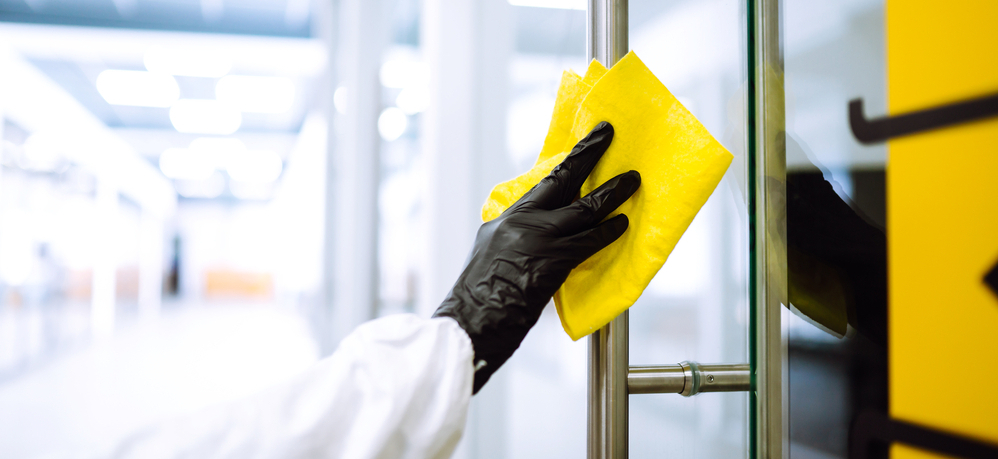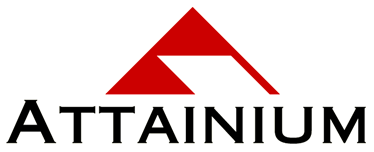Returning to Work after COVID-19: What to Know and Do
Reopening businesses and getting back to a more normal work situation will be different for everyone. The first thing is to realize that nobody will be returning to things the way they were. "Normal" will not be what we are used to. There are many things that will need to be done before you can welcome employees to the workplace again - and before they will feel comfortable returning to the workplace after this pandemic. Remember that COVID-19 has created a lot of anxiety for everyone, so doing everything possible to reduce the anxiety and create a safe workplace is critical.
Do you have a plan for reopening? The federal government has created a three-phase plan for reopening America, and we have provided a link to that plan below. You certainly will have heard parts of this plan on the news in recent days. Now you need to plan for how you are going to reopen (or plan to return to) the workplace. Below are some things you should be thinking about as you get ready to open.
When to Reopen?

First, of course, you must determine when you are going to reopen. The administration's plan providence guidance for reopening, but you also have to consider state and local "stay-at-home" orders since states may have varying expiration dates to the stay-at-home orders or are not following the federal guidelines, opening earlier or later than recommended. There also may be different requirements by states for opening - does everyone need testing? Another consideration is whether your employees commute from other states, which is especially true in New York, Washington DC, and other large metropolitan areas. If you are reopening in Washington, DC, for example, Virginia and Maryland still may have stay-at-home orders in place. In that case, how are you going to handle this? In some cases, these employees could be subject to fines or quarantine if they try to travel from home to work. The availability of transportation is another issue, as many people use public transportation to commute.
Cleaning and Sanitizing

Even if the workplace has been closed tight for weeks (and especially if it hasn't), it is incredibly important to clean and sanitize the entire place. If your company is a tenant, they will have responsibility for cleaning interior areas, but the building owner should be taking care of cleaning and inspecting the HVAC and other mechanical equipment that is not owned by you.
Use your normal cleaning company or hire one that specializes in cleaning after the pandemic to ensure that every floor, desk, door, phone handsets and buttons, bathrooms, and every other surface that is touched often is thoroughly cleaned and disinfected. You want to be sure that everyone feels safe returning to the building. And perhaps you should consider increasing how often the place is cleaned. If it was one once a day before the pandemic, maybe twice a day is necessary now, or after every shift change or after every use of common areas. The EPA published in March a list of cleaners that kill coronavirus, so that would be a good guide to what products you should be using (and making available) for cleaning and disinfecting.
It's important to help employees maintain the cleanliness and sanitary condition of the work area. You can encourage this by putting hand sanitizer stations on either side of every door, outside of and in the elevator, and anywhere else that is practical. Also, put tissues or something in the elevator for people to use to push the floor buttons and put up a sign to make it known. Put up posters in the bathrooms and kitchen reminding everyone about proper handwashing. Put notices above all the light switches asking that they should be left on. Provide separate trash pails for disposal of PPEs and other materials like masks and wipes. One company provides paper desk toppers with or without a calendar that you pick up when you come in and dispose of when you leave so you can leave a totally empty desk for cleaning. You can probably think of other areas that need this kind of attention as well.
Social Distancing

Depending on the configuration of your workplace this could be challenging, which is why you must start planning for it now. Think about the entrance to the building. Will you allow entry only through one or two doors (remembering to adhere to fire and other codes)? Will entrance be controlled by security? Will you mark the area outside the doors with tape or paint so people will wait six feet apart while they wait to enter? And, once they are inside, then what?
Many experts recommend that all traffic should be one way in a clockwise direction. If employees use elevators, how will that work? Some companies are marking circles on the elevator floor to indicate where to stand. Depending on how large the elevator is, maybe only one or two persons can make each trip. Most offices today have cubicles or closely placed or shared workspaces. If possible, you need to remove desks in order to keep the six-foot social distancing recommendation. Especially today when we provide a small amount of space per person, you have to rethink how this will work. If you are staggering workdays or utilizing split shifts, you might be able to assign certain spaces for use on certain shifts or days (cleaning after each use). Remove chairs from meeting rooms so social distancing can be observed and post outside each room the number of people who can occupy it. So that room where you used to squeeze in 25 people for a meeting might now only accommodate eight safely. No longer will people be able to step into someone's office or cubicle to talk with them. Signs everywhere should remind them to maintain the six-foot distance.
In your reception area, you might want to install glass screens to encourage social distancing. If you usually provide plastic badges that are returned to the reception desk when a visitor leaves, consider changing to stickers that can just be thrown away. If there are touchscreens in this area, remove them and have the receptionist direct people. Post a sign at the reception desk telling people to follow the arrows to maintain a safe flow and to keep six feet from anyone else in the area.
Health

While it's legal to ask employees to provide proof that they are free from COVID-19, this is probably not going to be possible for quite some time. But, under EEOC regulations, employers may screen employees and visitors for temperatures of over 100 degrees with a scanning thermometer. It's also permissible to send home employees with possible symptoms of COVID-19. If someone is very ill, you should have a small room where they can be quarantined until an ambulance or other transport arrives.
If you typically use closets to store coats, etc., consider installing lockers or even coat hooks. Everyone should have separate storage for their belongings. To prevent the spread of germs, remove all china cups and dishes from the kitchen and replace them with paper; also remove forks, etc., and replace them with plastic. Advise everyone to use their own markers, pens, etc., and not to use any that are lying around.
Telework - who will and who won't

As stated in Phase I of the administration's reopening plans, and as most of the health experts agree, employers should encourage telework for some time yet as returning to the workplace is recommended to be a phased-in process. As we have seen in the past month or so, many people have been able to telework successfully. Employers need to determine who should return to the workplace. For example, if you have vulnerable populations (those over 65 or with underlying medical conditions), you may want to have them continue teleworking. If possible, employees with children who now have no access to daycare may need to continue to work from home. But these are decisions to be made before you start communicating plans to all employees. If you have policies that will work in making this decision, that's great; if not, you need perhaps to write some policies. Maybe people who need to take public transportation a long distance should work at home, so they are not exposed to the virus on their way to work.
According to Brookings, about one in five CFOs plan to keep 20 percent of their workforce working remotely to cut costs. That may be true of many companies. In that case, as some employers have recently learned, it may be necessary to invest in the technology and management required for a work-from-home force. This is something you should investigate if employees working from home will continue to do so at least part of the time. Some employees will need access to equipment that is available only in the workplace so that will help your decision about who should return to work a bit easier.
Communicating what's happening

We are all aware that anxiety and fear have run rampant over the past few weeks. There may be some employees who are reluctant to return to work, so it's especially important that you let them know what measures you are taking to keep them safe and healthy. They naturally want to know when they will return to work or if they will continue to telework, and what they will find when they do return to work. You must provide all the details about changes to the entry protocols, space allocation, etc. Will you provide food? Should they bring their own food? Will you arrange for a food truck to park outside the building so they don't have to go to a restaurant (which may or may not be open) for lunch?
Will there be any redefining of roles and responsibilities? For example, you might want someone now to have the responsibility to ensure that social distancing procedures are being followed or to ensure that PPE is available and disposed of properly, if necessary. Someone in the mailroom should be responsible for sanitizing incoming packages. And perhaps a supply clerk is necessary, so everyone won't be going into the supply area.
Whatever changes you make or the policies you put in place; you need to notify employees as soon as possible. You can make these notifications via newsletter, a new website, a Zoom call, or a combination of things that will work for everyone.
**Opening up America Again
https://www.whitehouse.gov/openingamerica/
**Cleaners That Kill Coronavirus: EPA's Expanded List
https://heavy.com/news/2020/03/cleaners-that-kill-coronavirus/
**Recovery Readiness: A How-to Guide for Reopening your Workplace
https://www.cushmanwakefield.com/en/news/2020/04/how-to-guide-for-reopening-workplaces-released
Copyright (C) 2020 Attainium Corp - All rights reserved.

